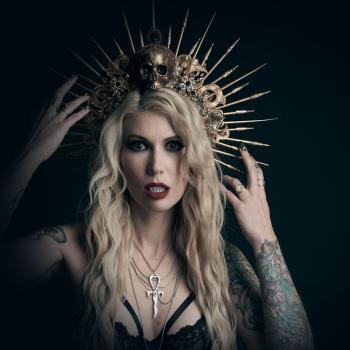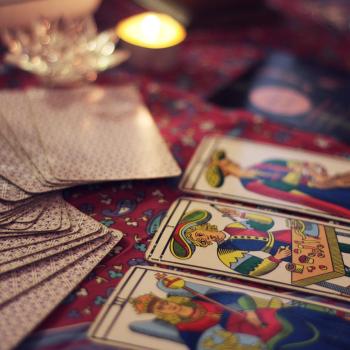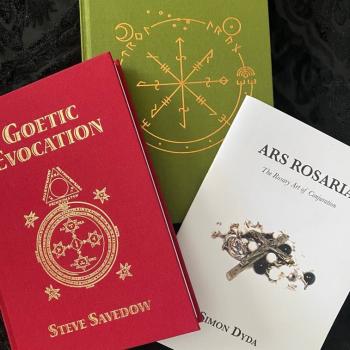Witches were often the outcasts of society. They were those people that were disliked, and therefore made easy scapegoats. Those accused of witchcraft were demonized and accused of performing numerous heinous acts. Many of these accusations consisted of testimony gained under torture. The guiding questions of the inquisitor led them to the information they wanted. Their goal was to create such an identity that it would strike fear in all those around. According to the reading, The Devil & The Witch, witches performed acts such as: “blood sucking, eating of children, infanticide, amongst other anti-mother imagery.” (Almond, 121) It seemed as though they were identifying witches as the inversion of the Virgi n Mary. They were the Devil’s whores and stood for everything sinful and ungodly. Witches could also be identified through certain characteristics that were laid out in detail in witch hunting manuals; the most infamous is the Malleus Maleficarum. Identifying marks, aversions to holy liturgy, and failure to pass certain tests were all characteristics that identified a guilty witch. A witch’s power came straight from the Devil. It differed from the common magic practiced by peasants that held on to remnants of pagan faiths and from the elite ceremonial magicians in their stuffy libraries. Witches exercised their power over the forces of nature. They had authority over the weather, the elements, and even the dead. All witches however answered to the agency of the Devil himself, he was their sole authority. According to the reading this power was gained when a pact was made with the devil that gave him power over their immortal souls, so really power and authority go hand in hand. This belief that was at the core of witchcraft was echoed by Eugenius IV (Almond, 128) Part of this pact was renouncing God, this was often done by reading the Lord’s Prayer backwards. This symbolic act helped sever any other ties they may have with Christianity. Those who made the accusations wielded a kind of temporary power as well. Many of the accusers we women as well, and the witch trials gave them a sense of power and justice in some cases. A feuding neighbor could get revenge by accusing them of any number of forbidden practices. An accusation was not always enough to see someone to the stake. A trial was needed, however unfair the proceedings, it was necessary to authenticate the accuser and also to obtain physical proof of a pact with the devil. It was the Devil’s Mark that was present on all of his witches that allowed inquisitors to authenticate these charges with evidence. According to the reading, “the pact between the witch and devil is sealed by a mark placed inconspicuously as to be hidden easily.” (Almond, 135) Nicholas Remy, writer of Demonalatria, also believed the devil marked those that he claimed. The inquisitors did not want to make these marks that came about in the 16th century necessary parts of a conviction. “The absence of a mark is not conclusive to innocence.” (Almond, 136) In England, unlike other parts of Europe, we learn that “malefic acts were more the focus of persecution than heresy.” (Almond, 138) According to the reading, in England, the mark “signified a distinctive feature of English witchcraft, keeping familiar spirits.” (Almond, 138) This belief is not solely tied to England, as beliefs in animal spirit familiars are found in many shamanic cultures world wide, according to previous research. Gender played a huge role in the prosecution and destruction of accused witches. The majority of those accused, tried and killed over witchcraft charges was and continue to be women. It is my opinion that women have long been a threat to the Church because women have the ability to create life, which is something a man cannot do, but it is something that a woman shares with God. The inquisitors who were bent on rooting out heresy and demonic witchcraft were threatened by this divine gift that women possessed that seemed to put them closer to God. Instead of celebrating this connection, women become demonized as well. At best they were seen as foolish and naïve and at worst they were diabolical witches bent on the destruction of mankind. The ceremonial magic practiced by the elite few went unchallenged for sometime because males solely practiced it. It wasn’t until later that, “the interpretation of common magical tradition in explicitly demonic terms is crucial for understanding how and why magic became linked to the legal category f heresy.” (Almond, 196) Gender and bodies also shared a close relationship. Women’s bodies were the property of their father’s and eventually their husband. Even the women that attempt to go against the system become property of their new Lord. When a witch signed her pact with the Devil, her body also belonged to him to do as he pleased which usually involved sex. We also see the involuntary sexual encounters instigated upon the pious by demons of lust. The Witch’s body was also the conduit through which their power was received. They also used their witch’s mark to feed their familiar for doing her bidding. There are many tales of witches using various ointments to leave their physical bodies behind and travel in spirit to the Sabbath. Unlike the Christian ascetics the witches are known for celebrating their freedom. The primal religions that celebrate nature and the divine feminine celebrate sexuality and the human body, and this was perverted into demonic sexual encounters. The difference of which must be noted. Witches willing copulated with the Devil as part of their pact. Demons known as Incubi and Succubi preyed on unwilling victims in order to create their demonic children.
















